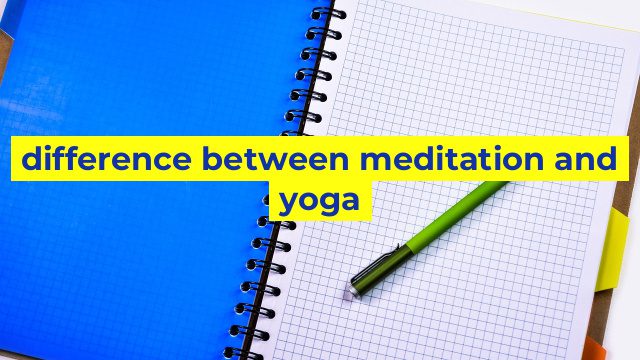The Difference Between Meditation and Yoga
Meditation
Meditation is a practice that involves training the mind to focus on a particular point, thought or activity, to achieve a state of relaxation and mental calmness. The aim is to achieve inner peace and mindfulness by focusing on breath, a mantra, or visualization, among others.
Meditation has many benefits, including reducing anxiety, improving emotional health, and lowering symptoms of depression. Additionally, it can make you more self-aware, improve your mental abilities, and enhance your sense of well-being.
Yoga
Yoga is a practice that originated in ancient India and has been in existence for over 5,000 years. It involves a combination of physical postures, known as asanas, breathing techniques, and meditation. The practice is designed to help you achieve a balanced body, mind and spirit.
While yoga and meditation share some similarities, the two practices are different. Yoga is more physical than meditation, and it involves stretching and holding poses to increase flexibility, strength, and balance. Additionally, yoga can help improve cardiovascular health and boost the immune system.
The Differences
The primary difference between meditation and yoga is that meditation is a mental practice that focuses on mindfulness and relaxation, while yoga is a physical practice that involves postures or “asanas,” to promote both mental and physical health.
Another difference between the two is that while meditation can be practiced in any environment, yoga requires a quiet and comfortable space. Additionally, meditation can be done sitting, standing or lying down, while yoga requires a mat, blocks or straps to help with achieving the correct posture.
In conclusion, while meditation and yoga have many physical and mental benefits, they differ in focus and practice. Meditation is a mental practice that focuses on mindfulness and relaxation, while yoga is a physical practice that emphasizes flexibility, strength, and balance. Both practices can help you achieve mindfulness, inner peace, and a more balanced lifestyle.
Table difference between meditation and yoga
| Aspect | Meditation | Yoga |
|---|---|---|
| Origin | Rooted in religious and spiritual traditions such as Buddhism, Hinduism, and Taoism | Rooted in Hinduism and developed as a physical, mental, and spiritual practice |
| Focus | Primarily focused on calming the mind, achieving inner peace, and enhancing self-awareness | Combines physical postures, breath control, and meditation to promote physical and mental health |
| Technique | Generally involves sitting in a quiet place, focusing on the breath or a mantra, and observing thoughts without judgment | Involves a series of physical postures, breath control, and meditation to achieve physical fitness, mental clarity, and spiritual growth |
| Benefits | Reduces stress and anxiety, improves sleep quality, enhances emotional well-being and self-awareness | Improves flexibility, strength, and balance, reduces stress and anxiety, enhances emotional and mental well-being, and promotes spiritual growth |
| Practitioners | Open to anyone, regardless of physical abilities or spiritual beliefs | Open to anyone, but physical abilities may limit the practice of certain postures or breathing techniques, and some may view it as a spiritual practice |
